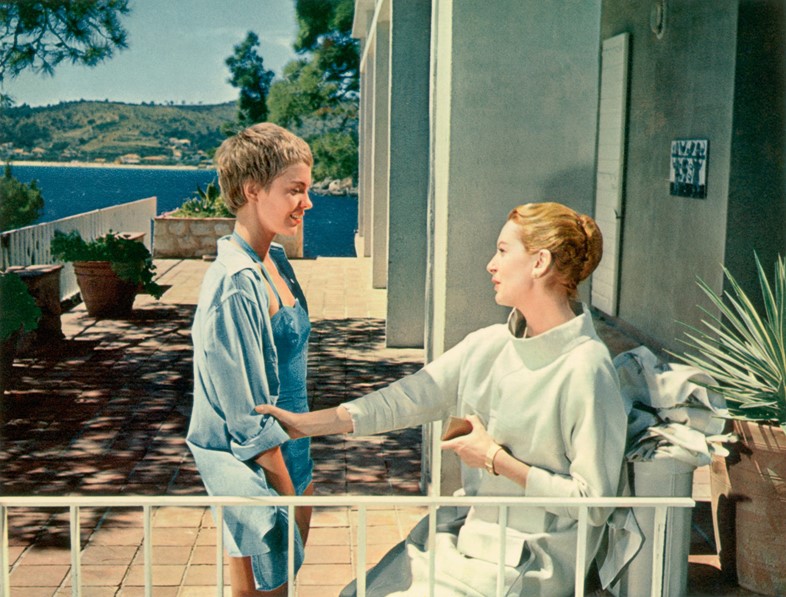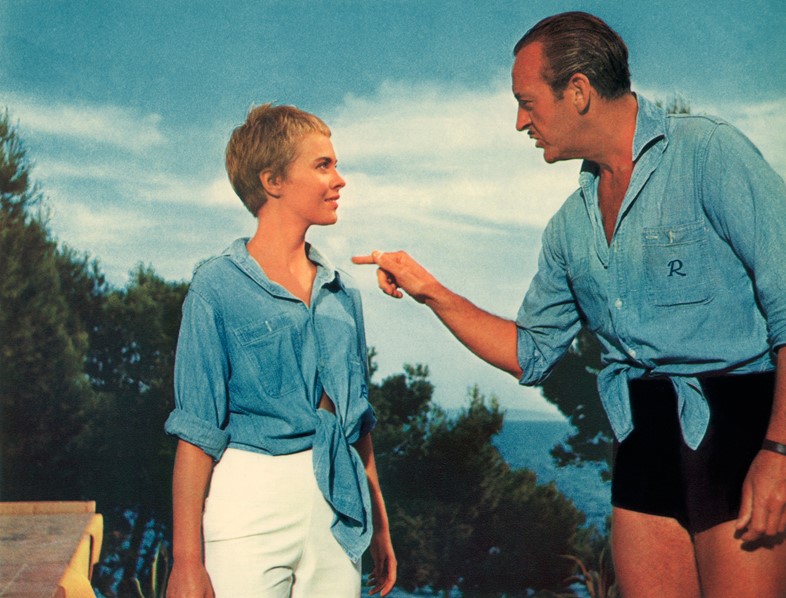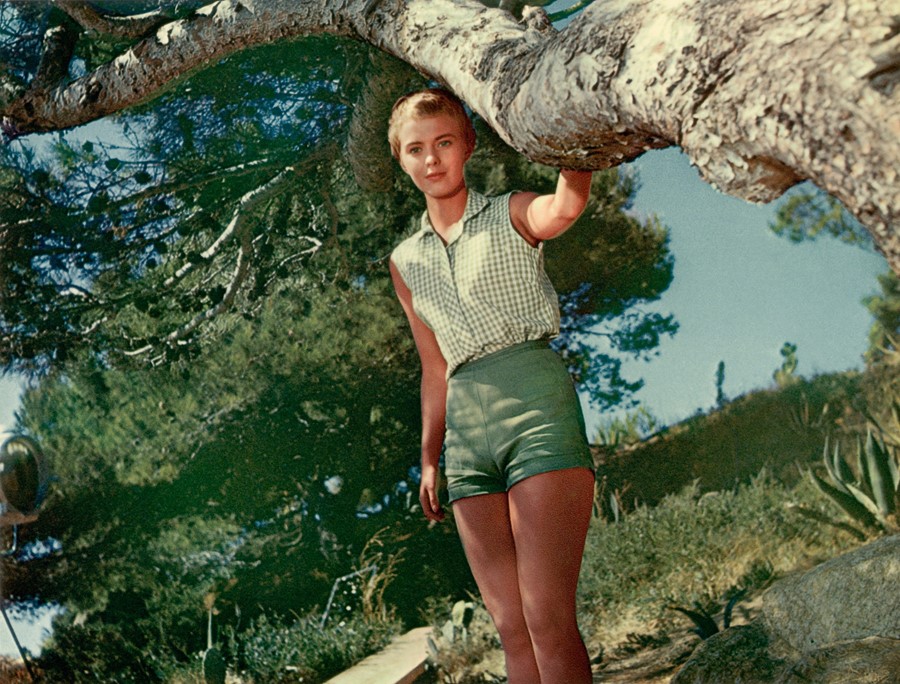Otto Preminger was derided for his 1958 version of the classic novel, but the languorous sexual heat of Bonjour Tristesse, and its beautiful, impetuous protagonist, continues to resonate 70 years on
“She captures something extremely modern, very contemporary,” said director Oliver Assayas last year, musing on the special magic of Kristen Stewart. “She is extremely smart and so articulate when she discusses her work. But she is also very physical. That is not common with American actresses.”
Stewart, you’ll recall, was held in low regard by the American film press when she started work on Clouds of Sils Maria, her acclaimed first collaboration with Assayas. But the French had other ideas, honouring her turn with a best supporting actress win at the Césars, where she became the first American performer to take home an award in the competition’s history in 2015.
What did the French see in Stewart that the Americans couldn’t? 60 years ago, when François Truffaut hailed the young Jean Seberg as “perfect” in influential film journal Cahiers du Cinema, critics had her pegged as a hopeless ingenue. By her own admission, the teenage actress had been “burned at the stake” for her performance in Otto Preminger’s Saint Joan (1957); when she returned the following year in Preminger’s Bonjour Tristesse, she fared almost as badly.
But Truffaut was smitten with the “boyish malice” in Seberg’s eyes as rich kid Cécile, a dreamy yet disconcertingly worldly teen summering with her playboy dad (David Niven) in the south of France. “When Jean Seberg is on screen you can’t look at anything else,” wrote Truffaut, sensing, as Assayas did with Stewart, that Seberg was a new kind of film star. “Her every movement is graceful, each glance is precise. The shape of her head, her silhouette, her walk, everything is perfect; this kind of sex appeal hasn’t been seen on the screen.”

Truffaut’s friend, Jean-Luc Godard, was also taken with the young star, making Seberg an icon of new-wave cool when he cast her in Breathless two years later. (Interestingly, both directors were huge fans of US genre cinema, whose early work reflected the American genius for ‘cool’ back at Hollywood – perhaps it takes an old-world eye on the new world to trace out the contours of the radically modern?)
Adapted from teen literary sensation Francoise Ozon’s novel of the same name, Bonjour Tristesse was part of an emerging teenage canon of films (Rebel Without a Cause) and literature (Catcher in the Rye) that spoke to the emerging generation gap, echoing the cultural heresies of rock’n’roll and the beats. Preminger’s film was derided at the time as trashy, but that’s kind of the point: it’s like an exquisitely mounted version of the TV soap operas that were becoming fashionable at the time, an elegant trifle that sparkles with the promise of the decade to come.
Nowhere is that promise more evident than in Seberg, equally at home in a black Givenchy dress as she is in slouchy Breton tees and cropped trousers. (Her pixie-cut predates Mia Farrow’s iconic ’do from Rosemary’s Baby by a full ten years.) She nails the character’s brittle impetuosity completely, her presence suggesting a young woman both supremely comfortable in her own skin, and bored out of it.
Seberg was criticised for her stilted line readings in the film, and while it’s true they can jibe awkwardly with the naturalism of her movement, there’s a certain kitschy charm to her flat narration that’s undeniable, and brings to mind the bored-kittenish delivery of Lana Del Rey or Peggy Lee in her droll 1969 ode to nihilism Is That All There Is? All told, it’s a performance that lands in the sweet spot between youthful vulnerability and bratty ennui that Sofia Coppola would mine so effectively some 40 years later.

Cécile’s dad, Raymond (David Niven), is a serial philanderer prone to kissing his daughter full on the lips, and she wears his urbane wit and shallow good cheer like a suit of armour. Their carefree existence is threatened by Ann (Deborah Kerr), a would-be mother figure who recognises the teenager’s need for direction in her life. In the fractious relationship between the two (Kerr was a prim-and-proper star of British postwar cinema), Preminger presents competing versions of femininity that point up the seismic changes to come in the 1960s. If he ultimately comes down on the side of stability, Cecile still gets some of the film’s best lines. (Jealous suitor: “He’s not for you.” Cecile: “Who is?”)
In its curious family dynamics, the film’s influence continues to ripple out across contemporary cinema. In Coppola’s Somewhere (2010), a burned-out Hollywood actor reconnects with his 11-year-old daughter, Cleo (Elle Fanning), whose preternatural maturity echoes that of Cecile, who sighs in a revealing moment in the film, “I wish I were a lot older… or a lot younger.” And in A Bigger Splash, Luca Guadagnino’s sultry tale of warring sexual intrigues from 2015, Penelope (Dakota Johnson) enjoys a somewhat troubling relationship with her dad (Ralph Fiennes), a hedonistic music-biz operator. (Fanning’s co-star, Tilda Swinton, gave her a copy of Bonjour Tristesse to read before shooting began.)
It’s Stewart, though, who’s been tasked with honouring Seberg’s legacy, in an upcoming biopic of the star focused on her activism and harassment at the hands of the FBI, which led to her untimely death at the age of 40 in 1979. But the languorous sexual heat of Bonjour Tristesse continues to resonate today.
